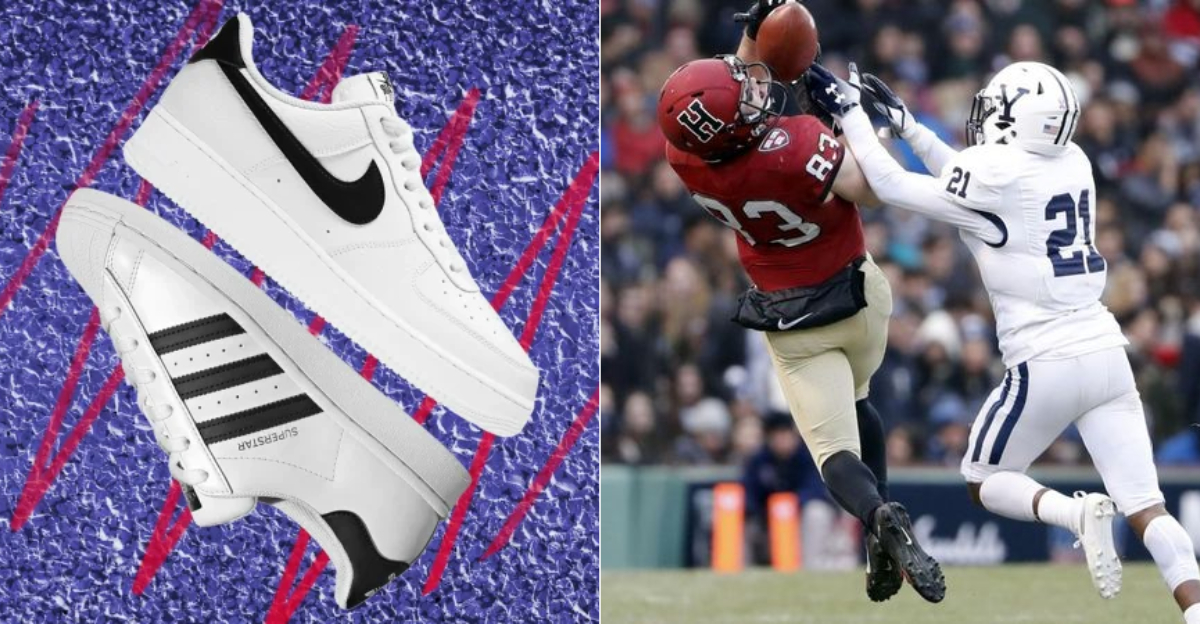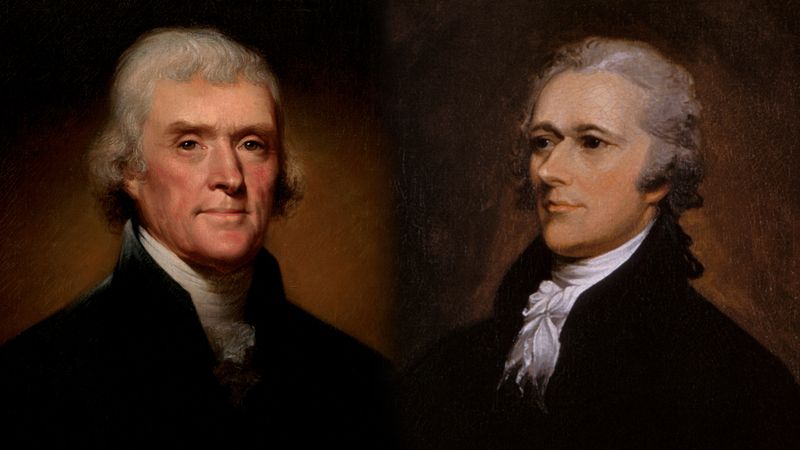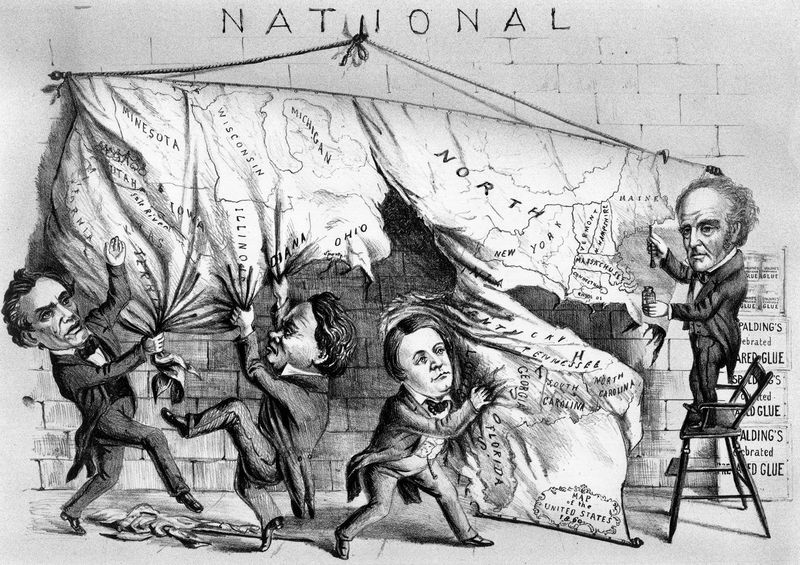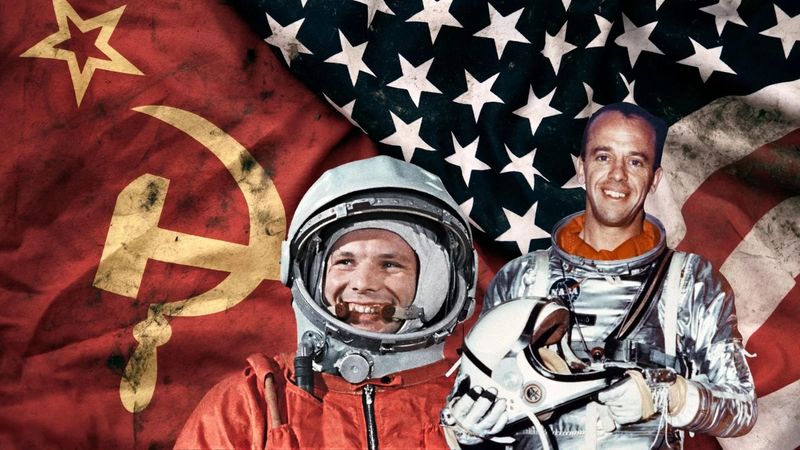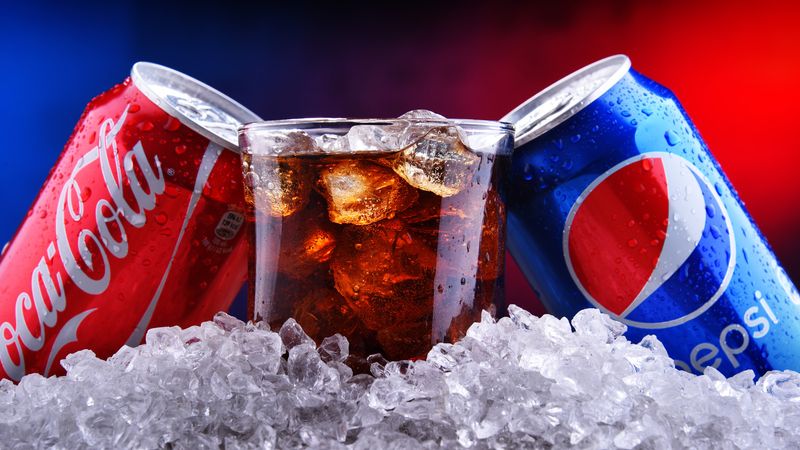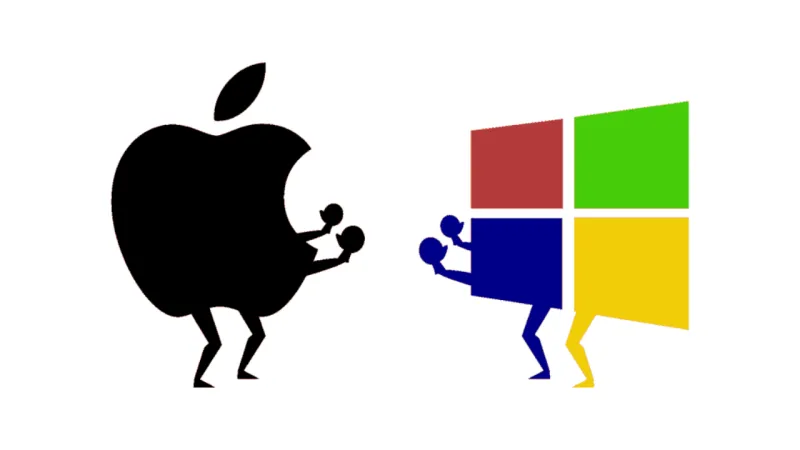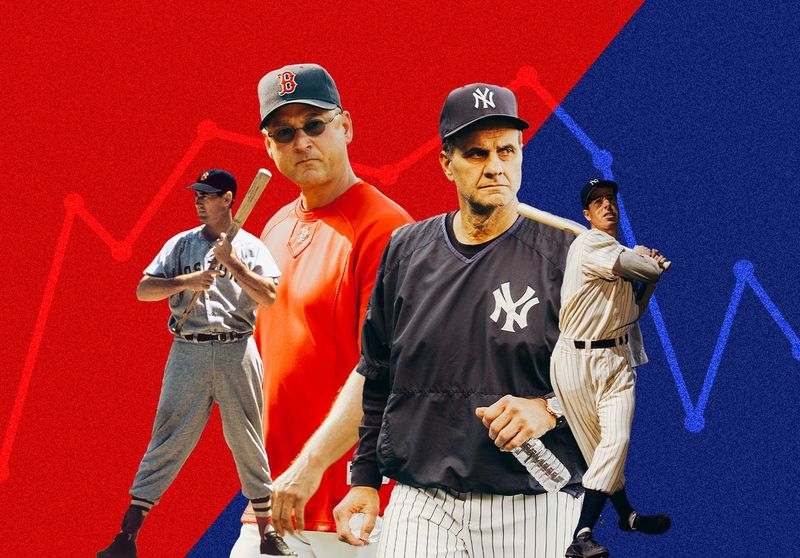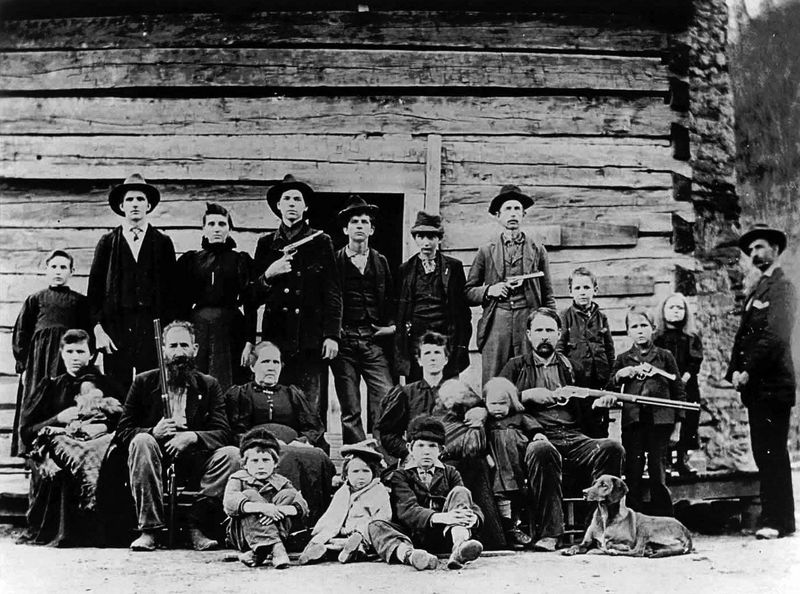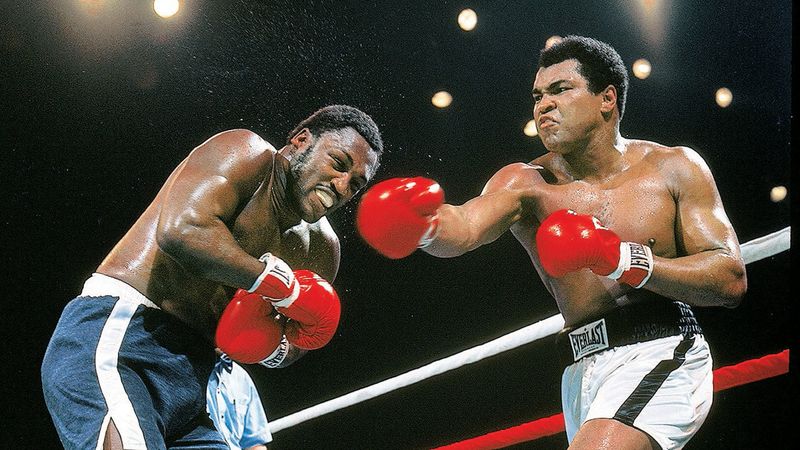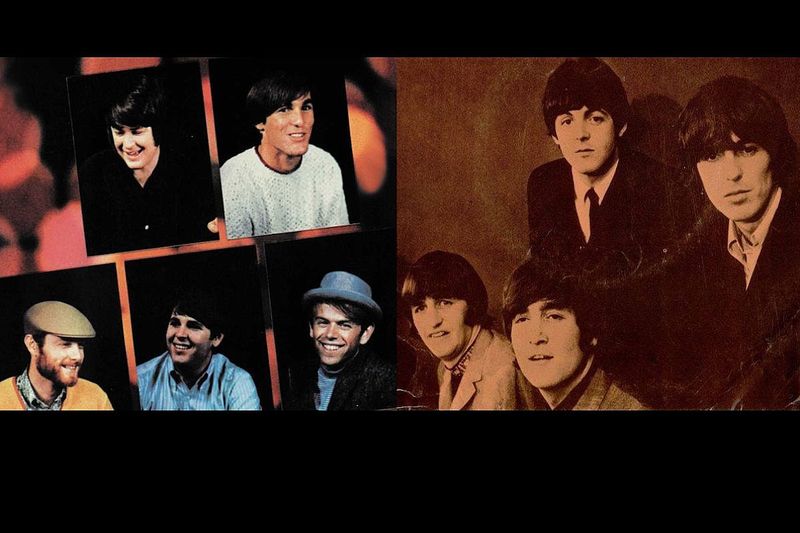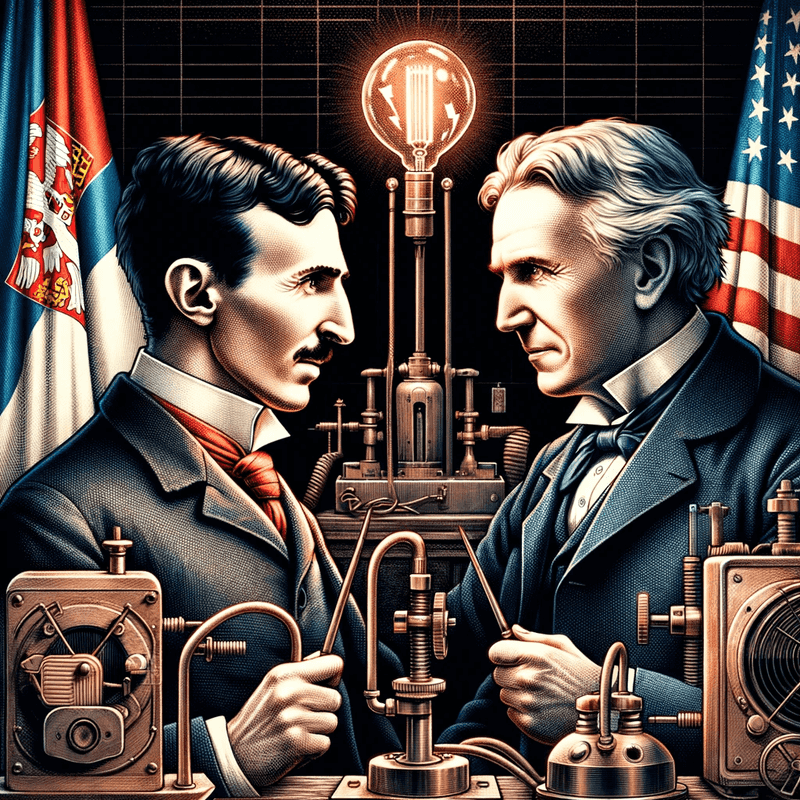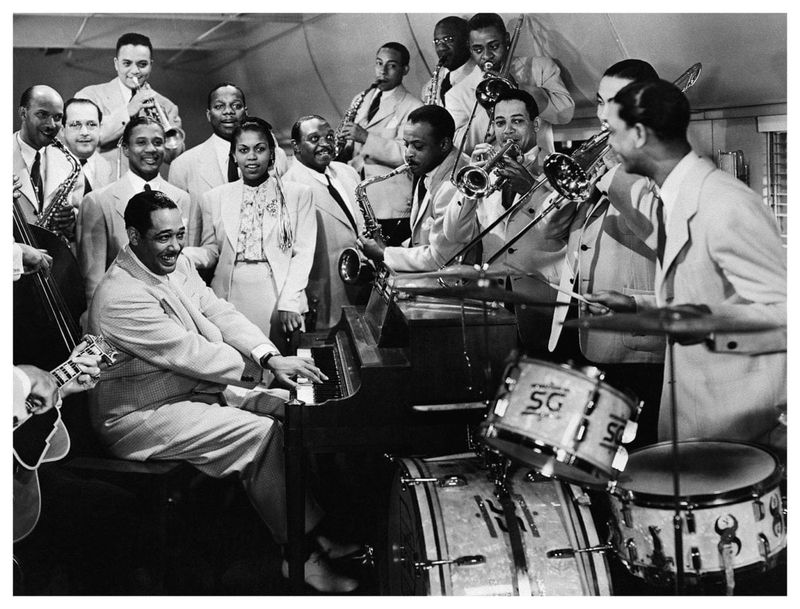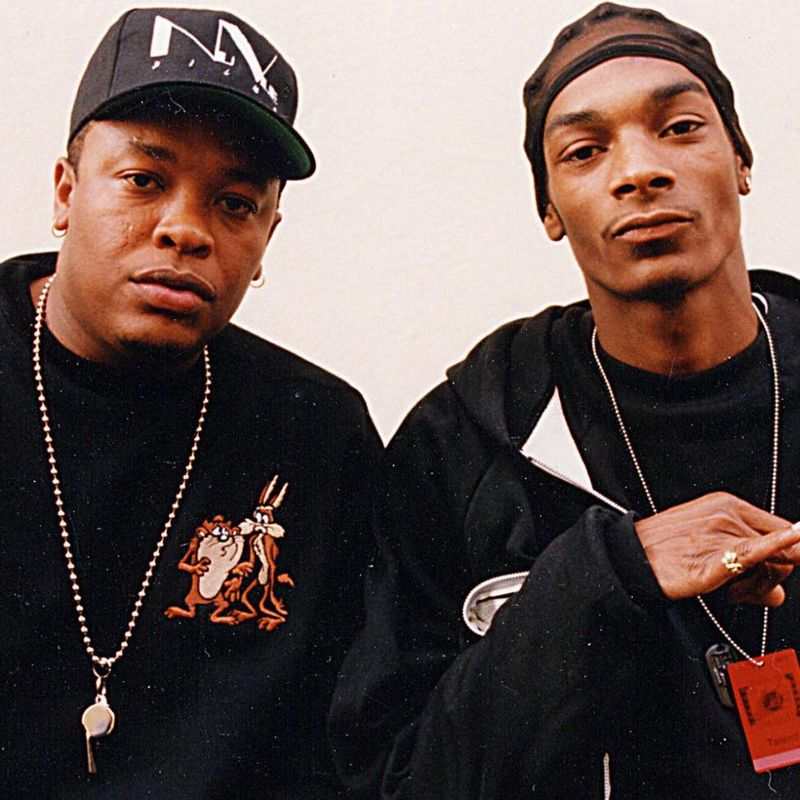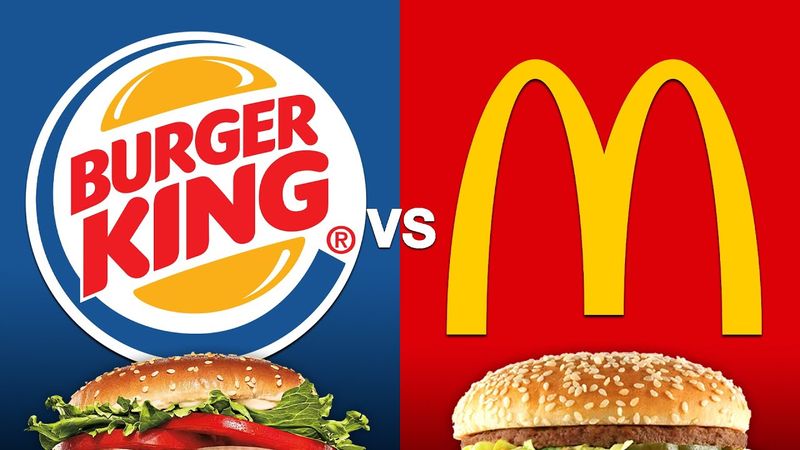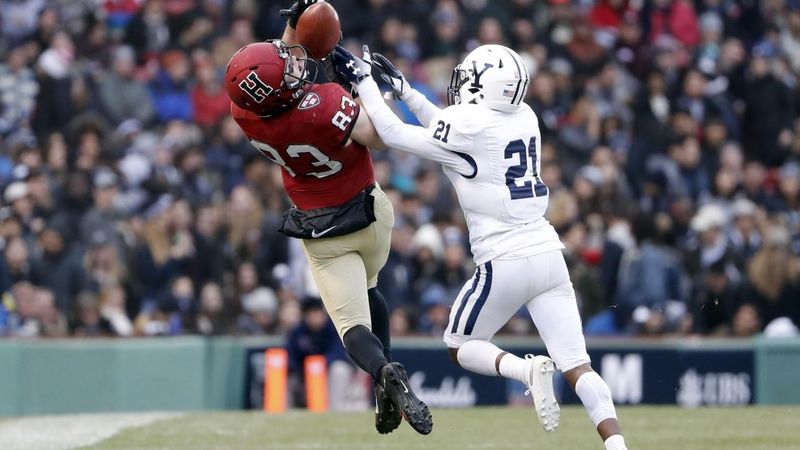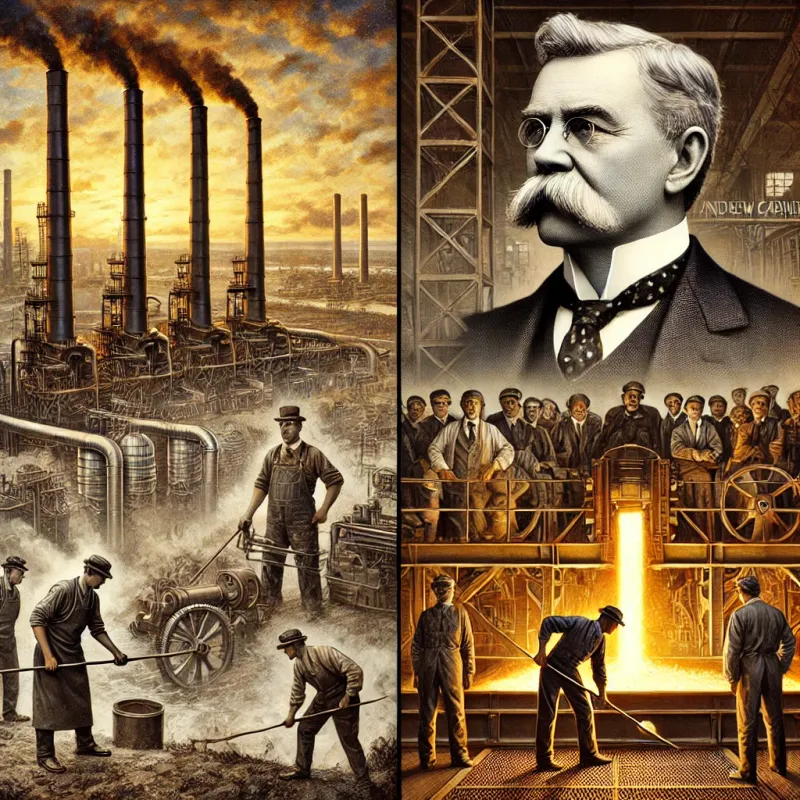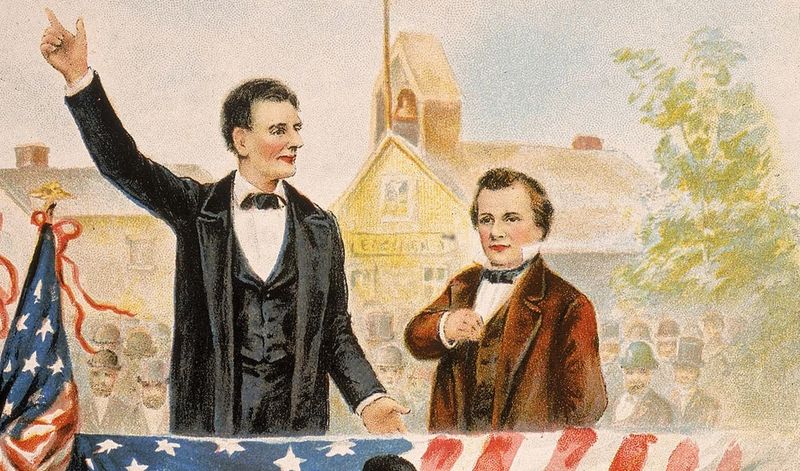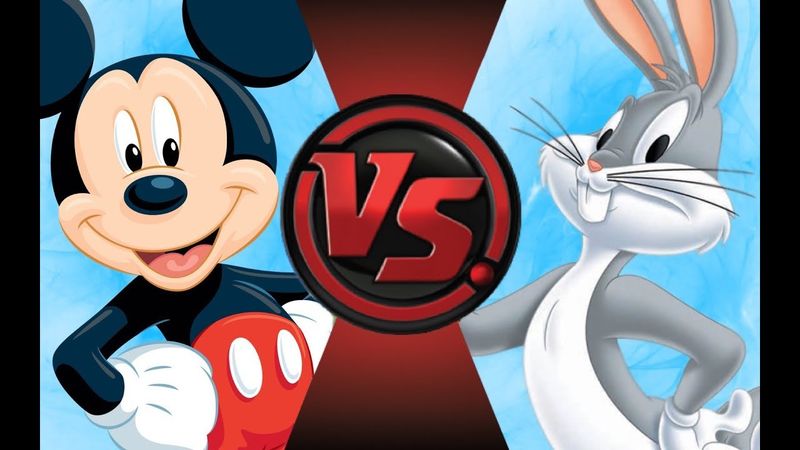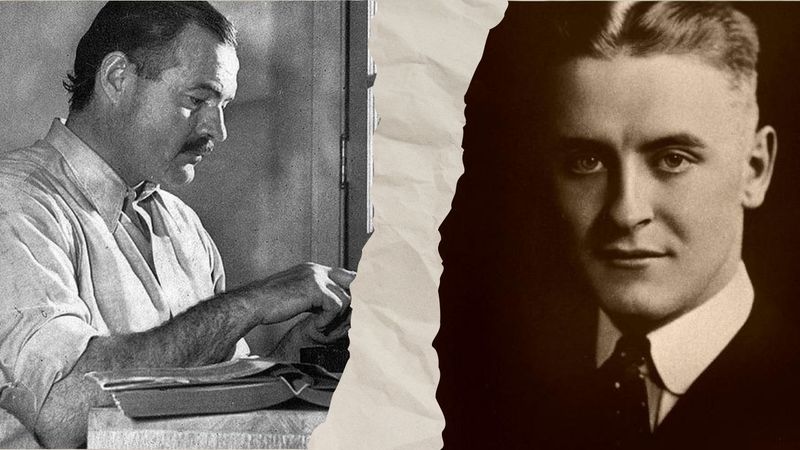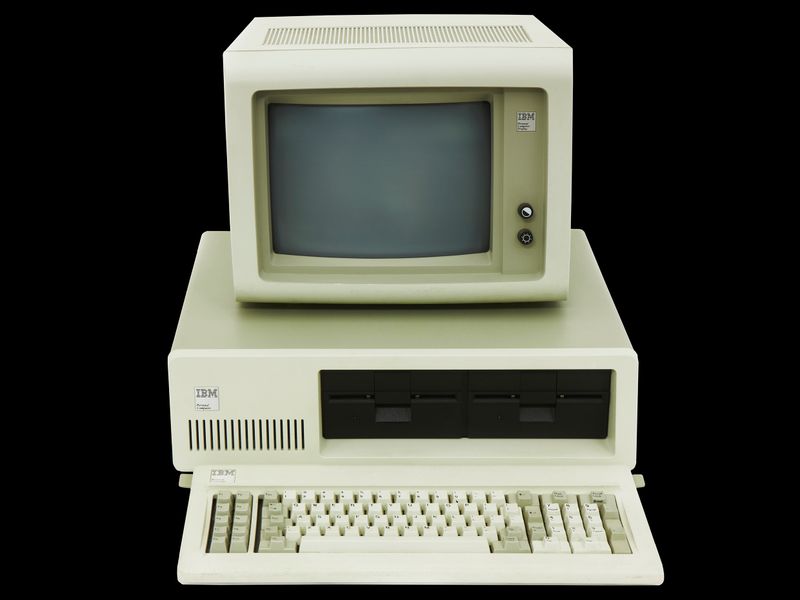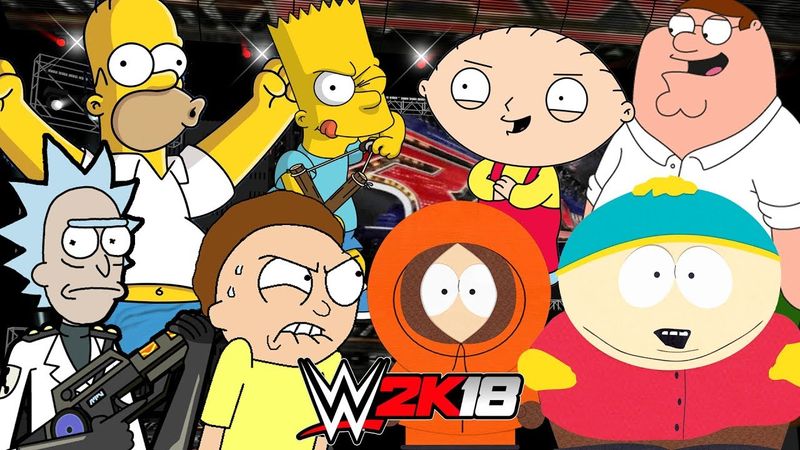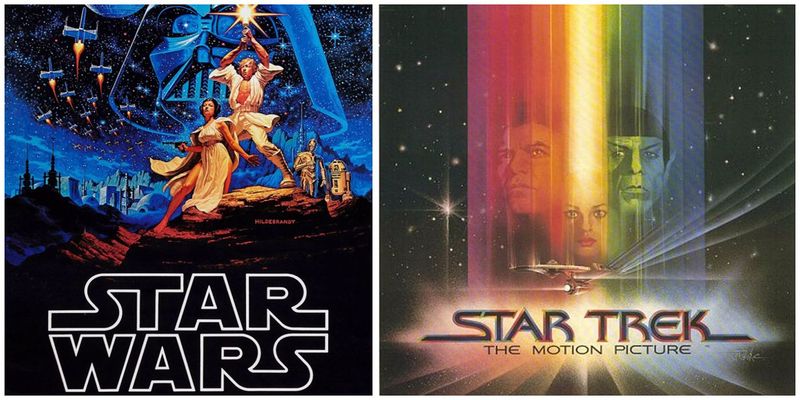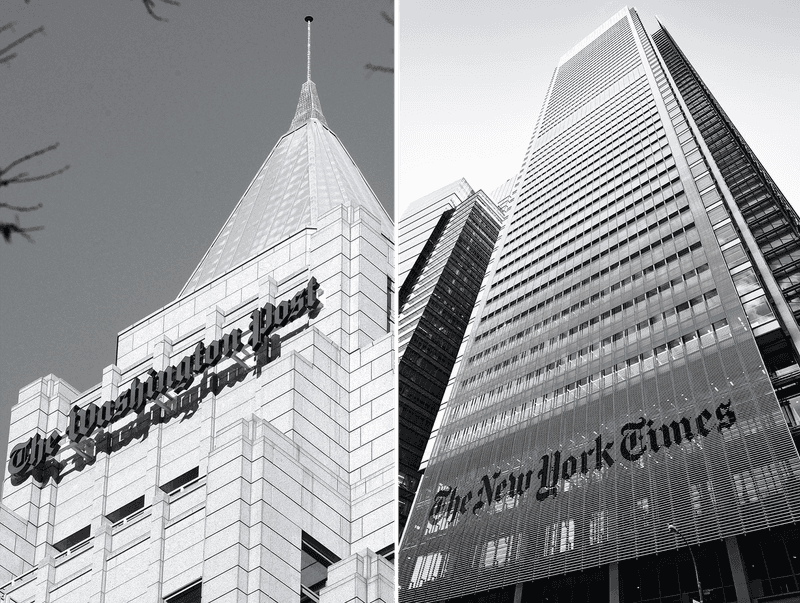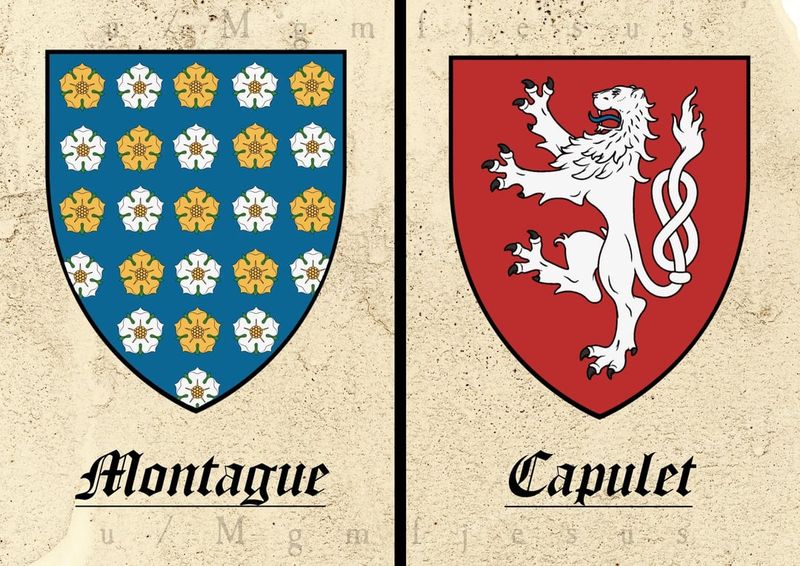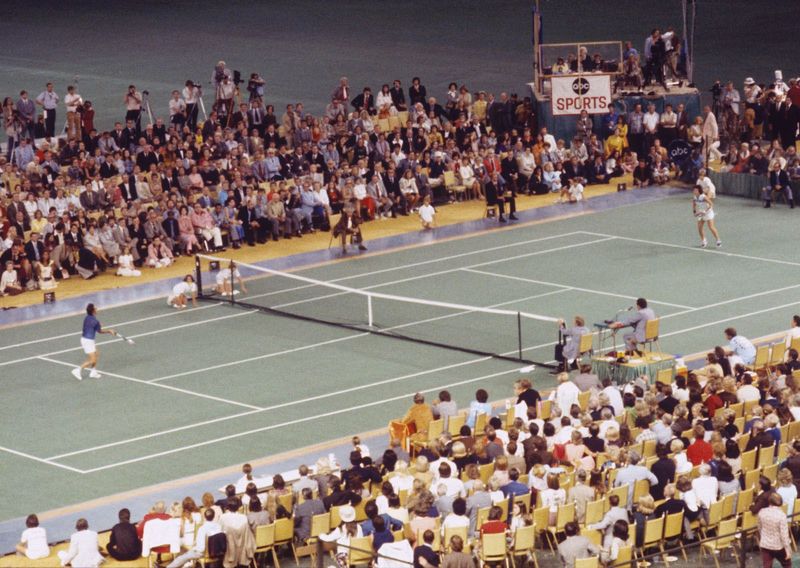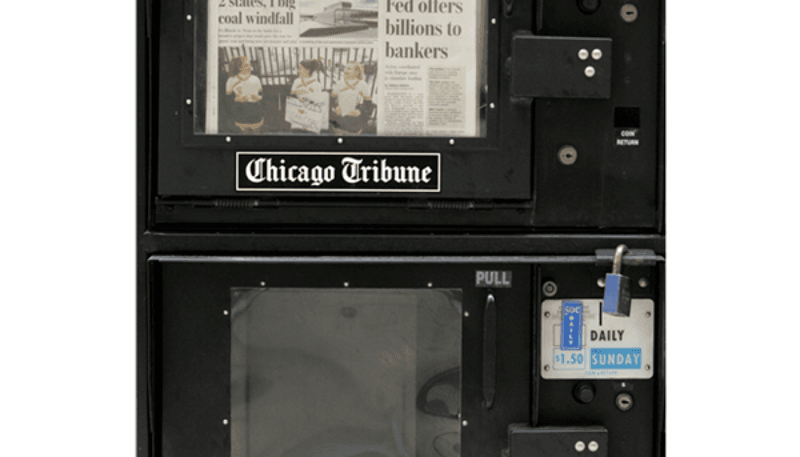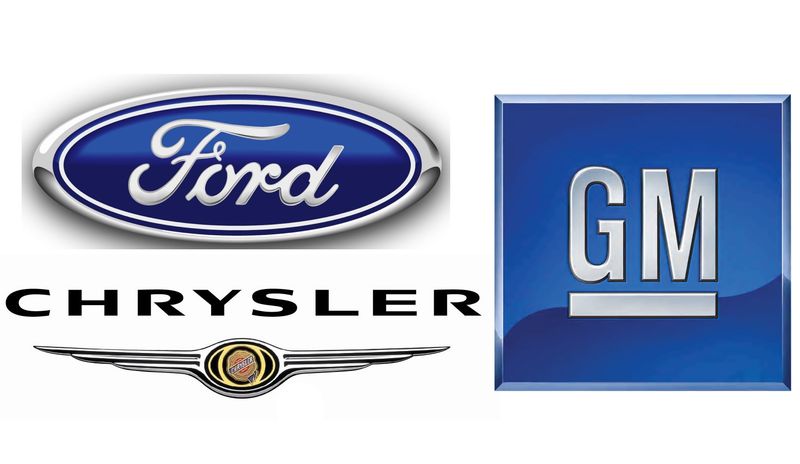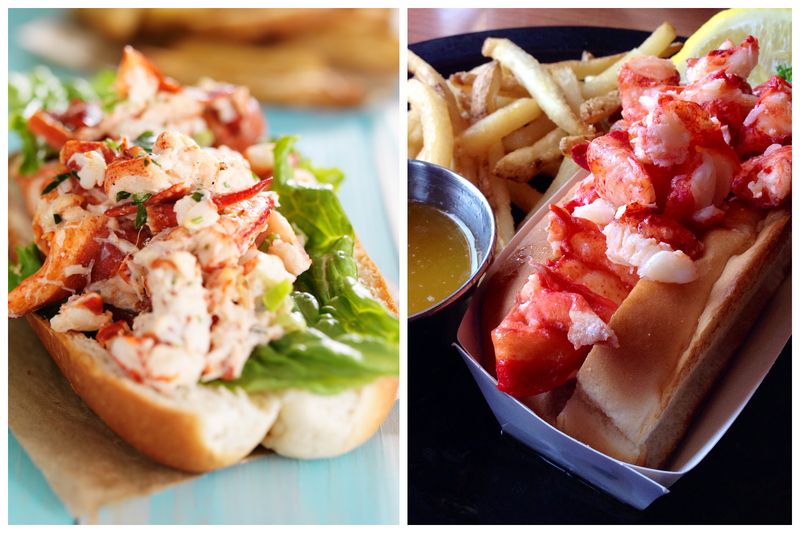Rivalries have been a driving force throughout the history of the United States, shaping the nation’s politics, culture, and society.
From political showdowns to cultural contests, these rivalries have not only defined eras but also paved the way for progress and change. Their influence can be felt across generations, as they continue to shape the American identity and landscape.
This article explores 30 of the most significant rivalries that have left a lasting impact, providing a window into the complex and dynamic history of the United States.
1. Alexander Hamilton vs. Thomas Jefferson
The ideological clash between Alexander Hamilton and Thomas Jefferson defined early American politics.
Hamilton, a Federalist, championed a strong central government and a thriving industrial economy. Jefferson, a Democratic-Republican, advocated for states’ rights and an agrarian society.
This rivalry set the stage for the nation’s first political parties. Their differing visions influenced the Constitution’s interpretation, economic policies, and foreign affairs.
The debates over centralization versus decentralization continue to echo in today’s political landscape, showing the enduring impact of their conflict.
2. The Civil War: North vs. South
The American Civil War was one of the most defining conflicts in U.S. history, pitting the Northern states against the Southern states. The war centered around profound issues such as states’ rights and slavery.
The North, advocating for the abolition of slavery and a unified federal government, opposed the South’s desire to maintain its way of life and its own governance.
Lasting from 1861 to 1865, this bloody war resulted in the end of slavery and a redefined national identity, leaving a profound impact on the nation’s development.
3. The Space Race: USA vs. USSR
The Space Race was a Cold War-era rivalry between the United States and the Soviet Union. It began with the USSR’s launch of Sputnik in 1957, which spurred the U.S. to accelerate its own space program.
This rivalry led to monumental achievements, including the Apollo 11 moon landing in 1969. The race to dominate space exploration captured the world’s imagination and showcased technological prowess.
It represented a broader ideological battle between democracy and communism, with lasting impacts on technology and international relations.
4. Ford vs. Chevrolet
The Ford vs. Chevrolet rivalry is a classic American tale of competition. These two automakers have been battling for supremacy on the roads for decades, influencing car design and innovation.
With Ford’s Mustang and Chevrolet’s Camaro leading the charge, this rivalry has fostered a passionate following among car enthusiasts. The competition extends beyond sales, fueling debates over performance, style, and loyalty.
It encapsulates the spirit of American innovation and consumer culture, making every model year an eagerly anticipated event.
5. Coca-Cola vs. Pepsi
Coca-Cola and Pepsi have been locked in a battle for dominance in the soft drink industry for more than a century. This rivalry is not just about taste but represents a clash of branding, marketing strategies, and global reach.
From the Pepsi Challenge to Coca-Cola’s iconic advertisements, both companies have fought for consumer loyalty.
This competition has driven innovation in product development and marketing, reflecting broader trends in consumer behavior. The rivalry remains a fixture in popular culture, symbolizing the power of brand identity.
6. Apple vs. Microsoft
The rivalry between Apple and Microsoft is one of the most famous in the tech industry. It began in the 1980s when both companies vied for dominance in personal computing. Apple’s innovative design philosophy clashed with Microsoft’s software-driven approach.
This competition has shaped the evolution of technology, impacting everything from user interfaces to mobile computing.
The rivalry has fueled advancements and debates about creativity and usability. It continues to influence the digital landscape, inspiring new generations of tech enthusiasts and entrepreneurs.
7. Yankees vs. Red Sox
The rivalry between the New York Yankees and the Boston Red Sox is legendary in the world of sports. Spanning over a century, it embodies the fierce competition and passion of baseball.
With countless memorable games and moments, this rivalry has captivated fans and fueled debates over player talent and team strategies. The Yankees’ history of success contrasts with the Red Sox’s underdog spirit, creating a dynamic tension.
This rivalry continues to define the spirit of baseball, uniting and dividing fans in equal measure.
8. The Hatfields vs. The McCoys
The Hatfield-McCoy feud is a quintessential American tale of family rivalry. Taking place along the Kentucky-West Virginia border in the late 19th century, this conflict involved two families locked in a bitter dispute over land and loyalties.
The feud, marked by violence and legal battles, became synonymous with family vendettas. Its legacy endures in American folklore, representing the dangers of unresolved conflicts and the power of reconciliation.
This rivalry highlights the cultural and historical complexities of Appalachia, offering lessons in forgiveness and understanding.
9. Muhammad Ali vs. Joe Frazier
The rivalry between Muhammad Ali and Joe Frazier was legendary in the world of boxing. Their trilogy of fights, especially the “Thrilla in Manila,” is considered among the greatest in sports history.
Ali’s charisma and Frazier’s tenacity made for a captivating contrast. Their battles transcended boxing, touching on broader themes of race, politics, and identity in America.
This rivalry pushed both fighters to their limits, leaving a lasting impact on the sport and culture. Their mutual respect grew over time, highlighting the power of competition to foster admiration.
10. The Beatles vs. The Beach Boys
The Beatles and The Beach Boys defined a musical rivalry that shaped the sound of the 1960s. Both bands pushed the boundaries of music, experimenting with new sounds and recording techniques.
The Beatles’ British invasion challenged The Beach Boys’ American surf rock, leading to a creative exchange that enriched popular music. This rivalry inspired classic albums like “Pet Sounds” and “Sgt. Pepper’s Lonely Hearts Club Band.”
Their influence on music and culture remains profound, illustrating how competition can drive artistic innovation.
11. Tesla vs. Edison
The rivalry between Nikola Tesla and Thomas Edison was a pivotal moment in the history of electricity. Known as the “War of Currents,” it centered on Tesla’s alternating current (AC) and Edison’s direct current (DC).
Tesla’s innovative AC technology ultimately prevailed, revolutionizing the way electricity was transmitted and utilized. This rivalry highlighted the clash between invention and commercialization, shaping the future of electrical engineering.
It remains a symbol of the relentless pursuit of progress and the complexities of intellectual property and innovation.
12. Harlem Renaissance vs. Jazz Age
The Harlem Renaissance and the Jazz Age were two transformative cultural movements in early 20th-century America.
While the Harlem Renaissance focused on the flourishing of African American arts, literature, and identity, the Jazz Age celebrated the rise of jazz music and dance.
These movements intersected and rivaled each other in popularity and influence. They played crucial roles in breaking racial barriers and redefining American culture.
The creative energy and innovation they inspired continue to resonate, demonstrating the power of culture to shape society.
13. East Coast vs. West Coast Hip-Hop
The East Coast vs. West Coast hip-hop rivalry was a defining moment in the history of music. Emerging in the 1990s, it showcased the distinct styles and cultural influences of each region.
The rivalry was marked by lyrical battles and personal feuds between prominent artists. It fueled creative innovation, leading to some of the genre’s most iconic tracks.
This rivalry also highlighted broader social and cultural tensions, leaving a lasting impact on hip-hop culture and the music industry.
14. McDonald’s vs. Burger King
The rivalry between McDonald’s and Burger King is a cornerstone of the fast-food industry. Both chains have been competing for consumer loyalty with their distinct menus and marketing strategies.
From the Whopper to the Big Mac, their iconic offerings have fueled debates and taste tests. This rivalry has driven innovation in menu development and customer experience, reflecting changing tastes and lifestyles.
It highlights the power of branding and the influence of consumer choice in shaping business strategies.
15. Harvard vs. Yale
The rivalry between Harvard and Yale is one of the oldest and most storied in academia. These prestigious Ivy League institutions have competed for centuries in fields ranging from academics to athletics.
Their annual football game, “The Game,” epitomizes this rivalry, drawing passionate alumni and students alike. Beyond sports, the competition extends to research, admissions, and cultural influence.
This rivalry has driven excellence and innovation, symbolizing the pursuit of knowledge and the value of tradition in higher education.
16. Rockefeller vs. Carnegie
The rivalry between John D. Rockefeller and Andrew Carnegie was emblematic of the Gilded Age. As titans of industry, their competition in oil and steel shaped the American economy.
Rockefeller’s Standard Oil and Carnegie’s steel empire symbolized the era’s industrial boom and the rise of monopolies. Their rivalry highlighted issues of wealth, power, and philanthropy, as both men later turned to charitable endeavors.
This competition influenced business practices and economic policies, leaving a legacy of innovation and responsibility.
17. Lincoln vs. Douglas
The Lincoln-Douglas debates were a series of seven debates in 1858 between Abraham Lincoln and Stephen Douglas. These debates centered on the issue of slavery and its expansion into new territories.
Lincoln’s moral opposition to slavery contrasted with Douglas’s emphasis on popular sovereignty. This rivalry elevated the national discourse on slavery, shaping public opinion and political alignments.
It paved the way for Lincoln’s eventual presidency and the Civil War, influencing the nation’s course towards freedom and equality.
18. Disney vs. Warner Bros.
The rivalry between Disney and Warner Bros. has been a defining feature of the entertainment industry. Both studios have created iconic characters and films that have captivated audiences worldwide.
From Mickey Mouse to Bugs Bunny, their creations have become cultural touchstones. This rivalry has driven advancements in animation and storytelling, pushing the boundaries of creativity.
It reflects broader trends in media and technology, highlighting the power of imagination and the importance of storytelling in shaping culture.
19. Lakers vs. Celtics
The rivalry between the Los Angeles Lakers and the Boston Celtics is legendary in the NBA. Spanning decades, it represents the pinnacle of basketball excellence and competition.
With numerous championships and iconic players, this rivalry has defined eras and captivated fans. It has driven innovation in the sport, influencing playing styles and strategies.
The Lakers-Celtics rivalry symbolizes the passion and intensity of professional sports, uniting fans in their love for the game.
20. Hemingway vs. Fitzgerald
The rivalry between Ernest Hemingway and F. Scott Fitzgerald was as much personal as it was professional. Both authors were leading figures in the literary world of the 1920s, known for their distinct writing styles.
Hemingway’s terse prose contrasted with Fitzgerald’s lyrical elegance, leading to both admiration and tension. This rivalry fueled some of their finest works, such as “The Great Gatsby” and “The Sun Also Rises.”
Their competition reflects broader themes of ambition, creativity, and the complexities of friendship in the literary world.
21. IBM vs. The Clone Makers
The rivalry between IBM and the “clone” computer makers in the 1980s was a turning point in personal computing. IBM’s dominance was challenged by companies producing IBM-compatible PCs, offering similar functionality at lower prices.
This competition drove innovation and accessibility, accelerating the growth of the personal computer market. It highlighted issues of compatibility and standardization, influencing the future of technology.
The rivalry helped transform computing from a niche industry to a global phenomenon, shaping the digital age.
22. Nike vs. Adidas
Nike and Adidas have been fierce competitors in the world of sportswear and athletic branding. Their rivalry extends beyond products, influencing fashion, culture, and sports sponsorships.
From innovation in athletic shoes to high-profile endorsements, both brands have shaped the industry. This competition has driven advancements in technology and design, reflecting broader trends in health and lifestyle.
The rivalry symbolizes the power of branding and the impact of sports culture on consumer behavior.
23. The Simpsons vs. South Park
The Simpsons and South Park have been at the forefront of animated television, each offering a unique take on satire and humor. The Simpsons, known for its family-friendly appeal, contrasts with South Park’s edgy irreverence.
This rivalry highlights different approaches to social commentary and storytelling. Both shows have pushed the boundaries of animation, influencing popular culture and media.
Their competition reflects broader themes of creativity and the power of satire to engage and entertain audiences.
24. Star Wars vs. Star Trek
The rivalry between Star Wars and Star Trek is iconic in the realm of science fiction fandom. Both franchises boast passionate fan bases and rich, imaginative worlds.
While Star Wars focuses on epic storytelling and adventure, Star Trek emphasizes exploration and philosophy. This rivalry has inspired debates and discussions about themes, characters, and storytelling.
It showcases the diversity of science fiction and its ability to capture the human imagination, uniting fans in their love for the genre.
25. The New York Times vs. The Washington Post
The rivalry between The New York Times and The Washington Post is significant in the field of journalism. Both newspapers have been at the forefront of investigative reporting and breaking news.
Their competition has driven excellence in journalism, influencing public discourse and policy. This rivalry reflects broader themes of media influence, ethics, and the pursuit of truth.
It highlights the vital role of journalism in a democratic society, shaping the way information is gathered and shared.
26. Montague vs. Capulet: A Symbolic Rivalry
The Montague-Capulet rivalry, though fictional, symbolizes timeless themes of love, conflict, and reconciliation. Originating from Shakespeare’s “Romeo and Juliet,” it represents the destructive power of family feuds.
This symbolic rivalry transcends literature, offering insights into human nature and societal dynamics. It continues to inspire adaptations and interpretations, reflecting the enduring relevance of Shakespeare’s work.
The rivalry reminds us of the importance of understanding and empathy, offering lessons that resonate across cultures and generations.
27. The Battle of the Sexes: Billie Jean King vs. Bobby Riggs
The “Battle of the Sexes” tennis match between Billie Jean King and Bobby Riggs in 1973 was a symbolic moment in the fight for gender equality. King, a trailblazing female athlete, faced Riggs, a former men’s champion, in a match watched by millions.
Her victory challenged stereotypes and highlighted the capabilities of women in sports. This rivalry resonated beyond tennis, contributing to the broader women’s rights movement.
It symbolizes the ongoing struggle for gender equality, inspiring future generations to break barriers and pursue their dreams.
28. The Chicago Tribune vs. The Sun-Times
The rivalry between The Chicago Tribune and The Sun-Times is a defining feature of the city’s media landscape. Both newspapers have been vying for readership and influence, shaping public opinion and local journalism.
This competition has driven innovation in reporting and storytelling, reflecting broader changes in the media industry. It highlights themes of ethics, competition, and the role of journalism in society.
The rivalry symbolizes the dynamic nature of news and its impact on community engagement and civic responsibility.
29. Chrysler vs. General Motors
The rivalry between Chrysler and General Motors is central to the U.S. automotive industry. Both companies have been competing for market share and innovation in car manufacturing.
From design to performance, their competition has driven advancements in automotive technology. This rivalry reflects broader themes of industrial competition and consumer choice, influencing business strategies and economic growth.
It symbolizes the spirit of American manufacturing and the pursuit of excellence in engineering.
30. The Great Lobster Roll Battle: Maine vs. Connecticut
A coastal showdown that tickles the taste buds, the rivalry between Maine and Connecticut over the perfect lobster roll is both delicious and divisive.
While Maine champions the purity of buttery lobster, Connecticut swears by a creamy mayonnaise dressing. This culinary clash transcends mere preference, it reflects rich traditions.
Summers see seafood festivals becoming battle zones where each state showcases its version with pride. The contest extends beyond taste, embodying regional pride and identity. Even tourists join the debate, adding fuel to the gastronomic fire.
Ultimately, the rivalry enhances the lobster roll’s allure, ensuring its place in American cuisine.
